Key takeaways
- Gelato has a denser and creamier texture than ice cream due to less air incorporation and lower fat content from using more milk.
- Essential ingredients for gelato include fresh whole milk, the right amount of sugar for texture, and egg yolks for emulsification.
- Key techniques for making gelato involve controlling churning speed, temperature, and mixing method to ensure the best texture and flavor.
- Experimenting with creative flavor combinations, such as seasonal fruits and herbs, can lead to unique and delightful gelato experiences.

What is gelato
Gelato is often described as Italian ice cream, but it’s truly its own delightful treat. Unlike traditional ice cream, gelato has a denser and creamier texture because it contains less air, which really makes each spoonful feel rich and indulgent. Have you ever noticed how gelato melts smoothly in your mouth, releasing intense flavors? That’s what makes it so special to me.
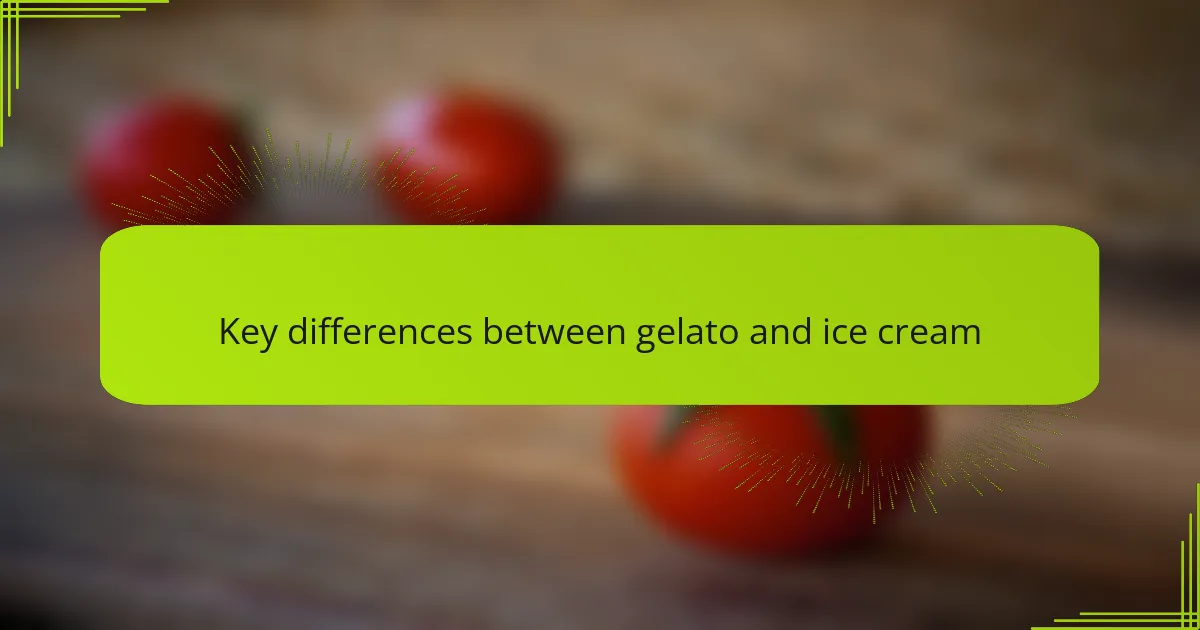
Key differences between gelato and ice cream
One of the first things I noticed when comparing gelato to ice cream is how gelato has a silkier texture, and that’s because it’s churned at a slower speed. This slower churning means less air is whipped into the mix, so every bite feels denser and more luxurious. Have you ever savored something that just feels richer without being overwhelming? That’s gelato for me.
Another big difference that surprised me is the fat content. Ice cream usually has more cream and therefore more fat, which gives it a heavier mouthfeel. Gelato, on the other hand, uses more milk and less cream, so it tastes lighter but somehow still incredibly creamy — almost like it strikes the perfect balance between indulgence and freshness.
Then there’s the serving temperature, which I think affects how we experience the flavors. Gelato is served slightly warmer than ice cream, so the flavors are more pronounced as they don’t get numbed by freezing cold. Isn’t it fascinating how a small temperature difference can completely change the way our taste buds enjoy a dessert? That subtle warmth really lets the natural ingredients shine through in gelato.
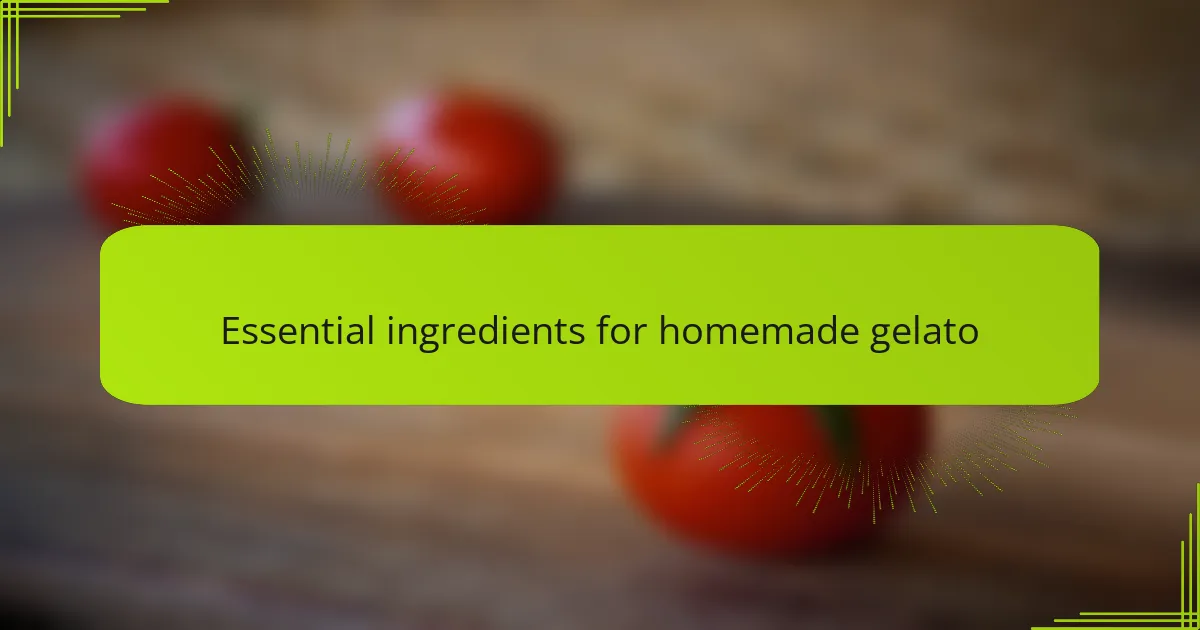
Essential ingredients for homemade gelato
When I first started making gelato at home, I realized that getting the essential ingredients right was the foundation of every successful batch. Fresh whole milk is crucial because it creates that smooth, creamy base without weighing it down with too much fat. Have you ever tried using heavy cream alone? It tends to make the gelato feel too dense and misses that delicate balance I love.
Another ingredient that caught my attention is sugar—not just for sweetness, but because it affects the texture and freezing point. Using the right amount keeps the gelato soft and scoopable, rather than turning it into a frozen block. I remember my early attempts where I added too much sugar and ended up with a gelato that was too sticky; it was a valuable lesson in precision.
Lastly, eggs often come into play, especially the yolks, which act as a natural emulsifier. They help blend the fat and water smoothly, giving the gelato that velvety texture that’s so addictive. I was surprised how just a few yolks could transform the mixture, making it silkier than I expected. Have you ever experienced a dessert where a simple ingredient change made all the difference? For me, eggs in gelato were exactly that game-changer.
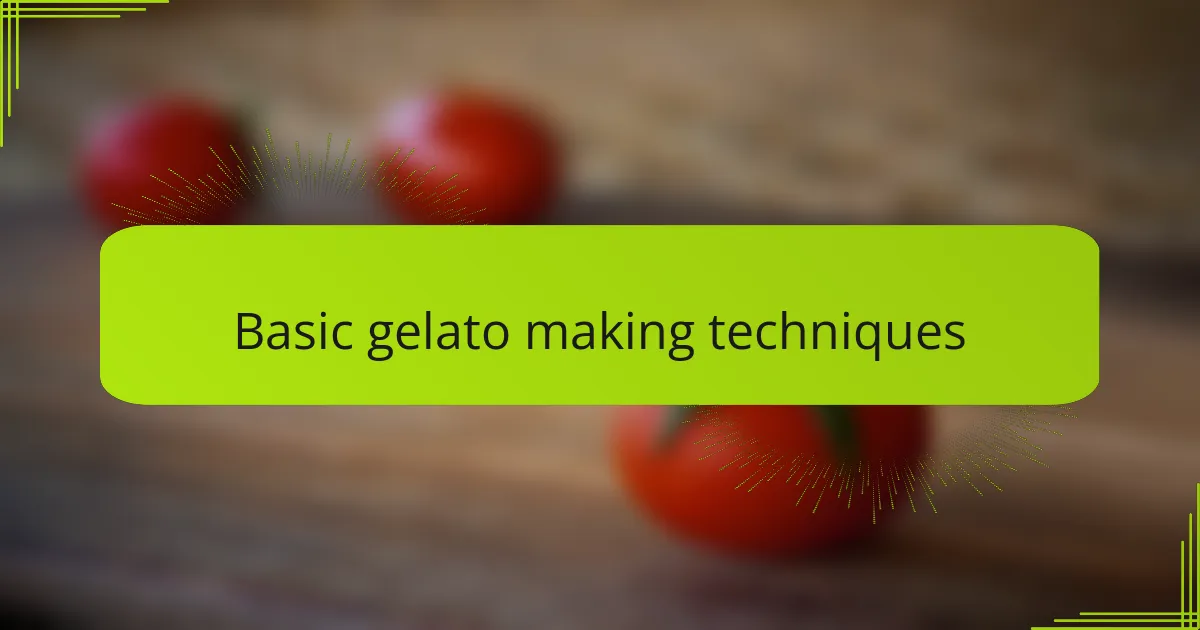
Basic gelato making techniques
Mastering the basic gelato-making techniques really boils down to patience and control, in my experience. For instance, the churning speed is something I learned to take seriously; turning the machine too fast whips in unwanted air, losing that dense creaminess I adore. Have you ever been disappointed by a gelato that felt more like icy fluff? Slower churning keeps it thick and indulgent, just the way it should be.
Temperature control also plays a huge role. When I first started, I was too eager to serve my gelato straight from the freezer, only to find the flavors muted and the texture hard as a rock. Serving gelato slightly warmer than ice cream really made a difference—it felt like unlocking a hidden depth of flavor and silkiness I hadn’t noticed before.
Finally, the mixing technique is something I personally pay close attention to. Stirring the base gently but thoroughly ensures all ingredients are harmoniously incorporated without disrupting texture. It’s almost like composing a symphony where each element has to blend just right to hit that perfect creamy note. Have you tried that delicate rhythm in your mixing? For me, it’s a simple step that elevates homemade gelato from good to unforgettable.
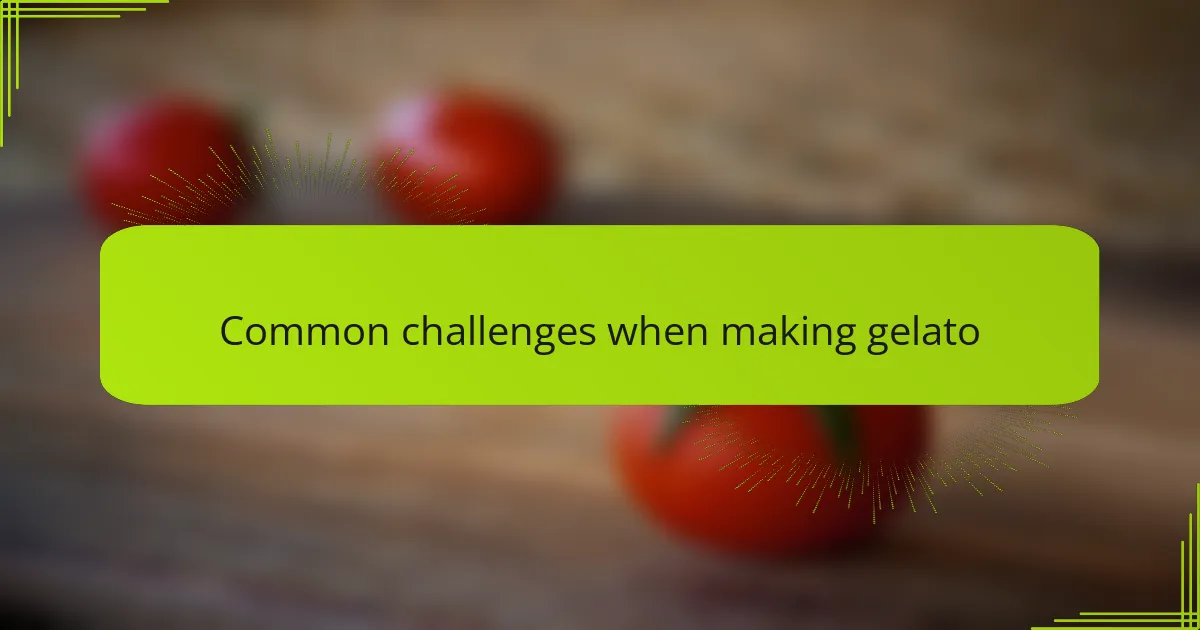
Common challenges when making gelato
One challenge I often face is achieving the perfect texture. Sometimes my gelato ends up either too icy or too soft, which can be frustrating after all that effort. Have you ever found yourself staring at a bowl wondering if it’s more like frozen yogurt or a true gelato? That texture balance really takes some practice and fine-tuning.
Another tricky part is temperature management during freezing. I remember rushing to serve my gelato straight from the freezer and regretting it because the flavors felt muted and the texture was uncomfortably hard. Waiting just a little longer for it to soften to the ideal serving temperature makes all the difference. Doesn’t it feel like unlocking the dessert’s soul when you get that timing right?
Then there’s the ingredient harmony—getting the sugar, fat, and eggs just right. I learned the hard way that a slight miscalculation can throw off the whole batch, making it icy or too sweet. Have you ever experimented and ended up with a gelato that just didn’t sing? For me, those “failed” attempts turned into invaluable lessons, helping me appreciate the delicate balance gelato demands.
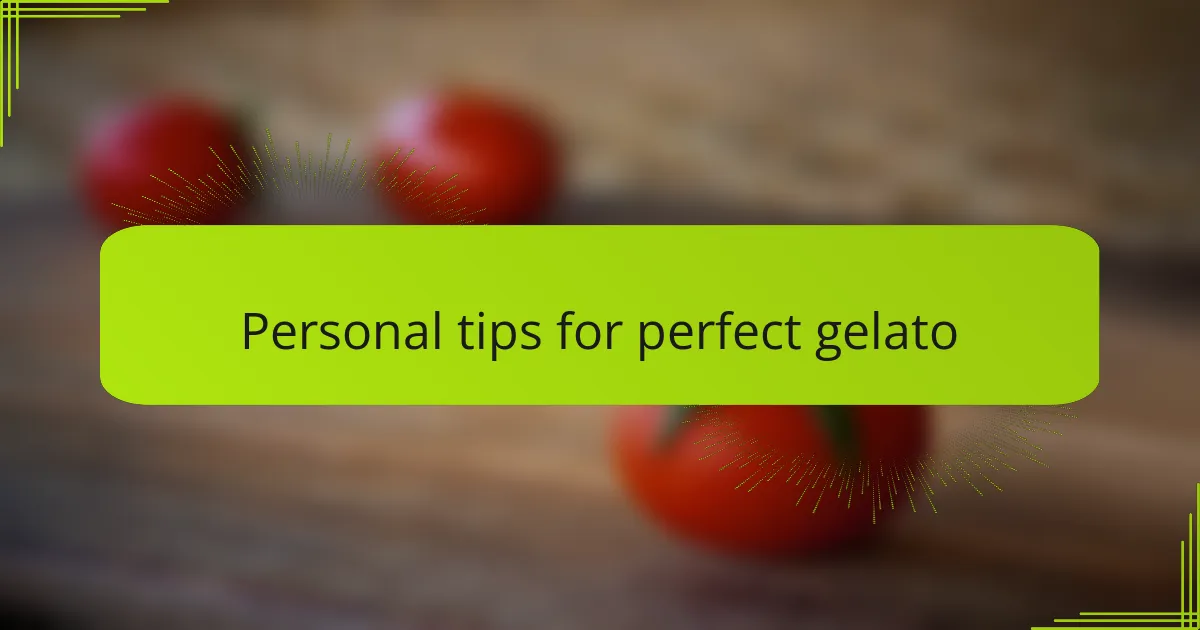
Personal tips for perfect gelato
One personal tip I swear by is to always chill the base mixture thoroughly before churning. I used to skip this step, thinking it would save time, but I quickly noticed the gelato turned out icy and grainy. Have you ever tried rushing the process only to regret it? Taking the extra time really makes the texture smooth and creamy, which is exactly what gelato should be.
Another trick I’ve picked up is to avoid over-churning. When I first started, I thought more churning would mean better creaminess, but instead, it introduced too much air and lost that characteristic density. Does it surprise you that less can sometimes be more? Slower, gentler churning keeps the gelato dense and indulgent, exactly as I love it.
Lastly, I always pay attention to the serving temperature. It’s tempting to dig in right out of the freezer, but I’ve found that letting gelato sit for a few minutes at room temperature unlocks its full flavor and softness. Have you noticed how flavors bloom when a dessert isn’t too cold? That subtle warmth is what makes homemade gelato such an unforgettable treat for me.

Creative gelato flavor ideas
When I started experimenting with creative gelato flavors, I quickly realized that combining unexpected ingredients can yield surprisingly delightful results. Have you ever tried blending basil with lemon or adding a touch of black pepper to strawberry? Those spicy-sweet contrasts made my gelato feel like an adventure in every bite, proving that boldness really pays off.
One flavor combo that became my favorite involves roasted figs drizzled with honey and a sprinkle of toasted pistachios. The earthy sweetness perfectly complements the creamy gelato base, and every spoonful feels like a little celebration. What I love most about crafting these flavors is how they tell a story—each ingredient bringing its own emotion and memory to the mix.
I also found joy in working with seasonal fruits and herbs. Using fresh peach with a hint of rosemary or tangy blood orange with a pinch of sea salt transformed my batches into unique experiences that you just can’t find in a store. Don’t you think that creating flavors connected to the seasons makes dessert feel more special and personal? For me, it turns every gelato-making session into a creative journey worth savoring.




